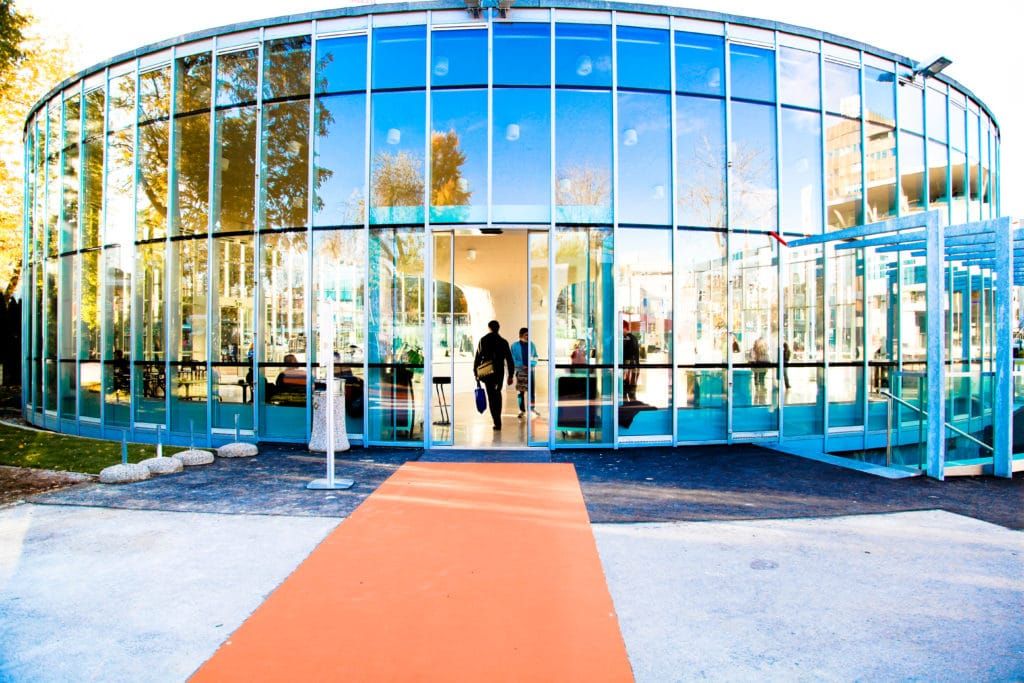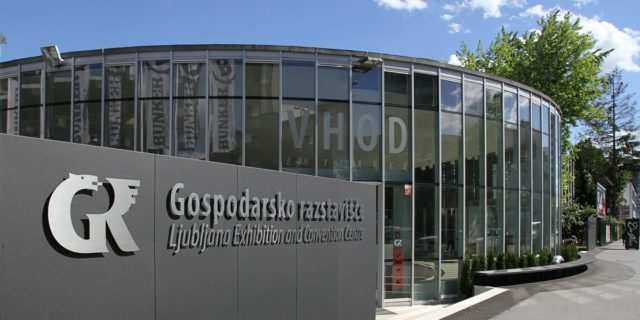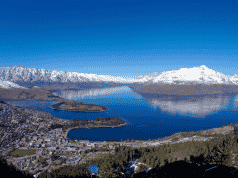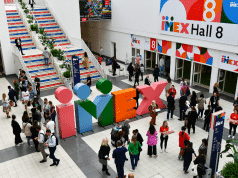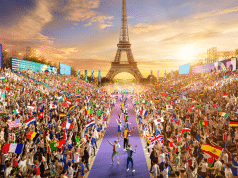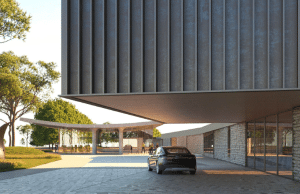FUNCTIONAL FAIR ARCHITECTURE THAT SUCCESSFULLY FIGHTS TIME
Ljubljana has exceptional comparative advantages for congress tourism (favourable climate, location at the crossroads of south-eastern and central Europe, developed infrastructure, hospitality, etc.). The Ljubljana Exhibition and Convention Centre (Gospodarsko razstavišče), which has been positioned as a medium-sized regional congress and fair centre, has been a key factor in this.
A rich fair history started at the former Ljubljana Fair by Gosposvetska Street. In 1953, the new authority wanted to revive the activity and defined the current location along Dunajska cesta for the location. This was the time when the Socialist Authority wanted to show the world a rapid development of the economy, and consequently the cities in former Yugoslavia began to compete among their fairgrounds.
DVORANA KUPOLA
In 1953 the open competition brought the first design of the current fairground. The construction was greatly accelerated by the VII. Congress of the Communists Party of Yugoslavia, for which they built the legendary hall A (today the Cupola). The hall was designed by architects Ilija Aranautovic. Boris Gabhersik and Milan Mihelič. At that time, the legendary fountain with the statue of Stojan Batič, was built, which today represents some kind of symbol of the exhibition site.
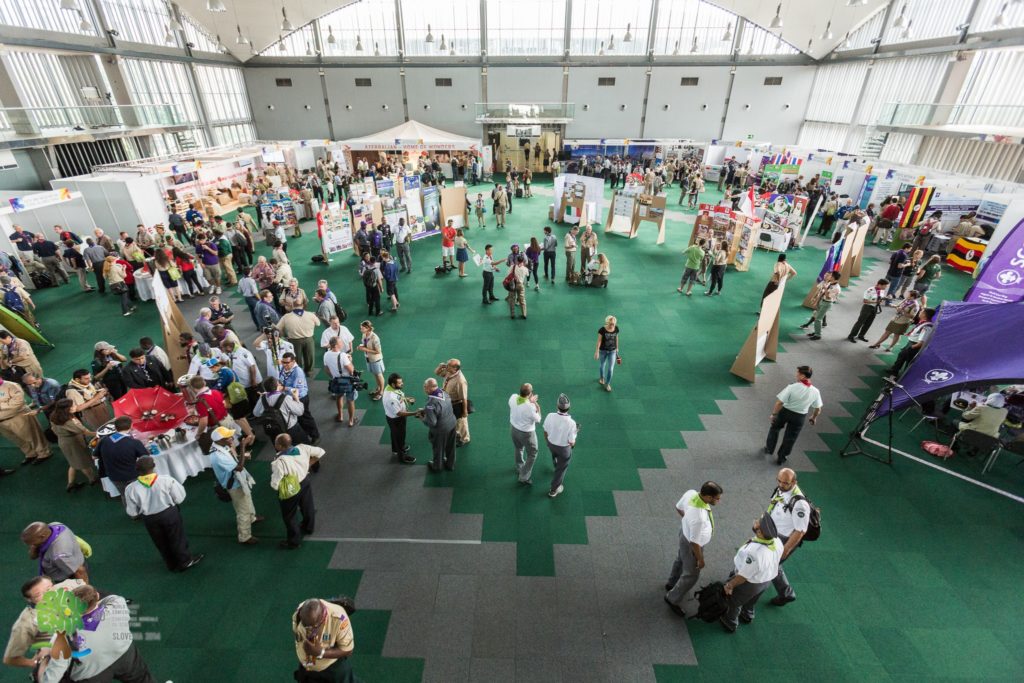
MARMORNA DVORANA
The other halls were built on the basis of the competition, which was held in 1960, but was in the end not realised, so the halls were built according to the needs of the exhibition centre. In 1960, the Jurček Pavilion was built, and in 1962 hall B (today the Marble Hall). In 1967, on the basis of a building plan for the whole area, hall C was built, which consists of four identical units (the units were modular and the original plan was to build 26 of them). In 1969, they considered a new hotel and the administrative building, which was never realised. The development of the Convention and Exhibition Centre was solved partially, and we can only hope that the idea of the hotel will finally come true.
The Marble Hall (former hall B) is also interesting in terms of architecture. It was designed by the architect Milan Mihelič. It is designed in a modern way, and the airfoil-shaped roof gives it a special touch. The special features of the hall are extremely high ceilings, which are especially appreciated by the organisers of more demanding events. The hall was thoroughly updated in 2005 and today, due to its spaciousness and functionality, it is one of the most in demand congress halls in Ljubljana.
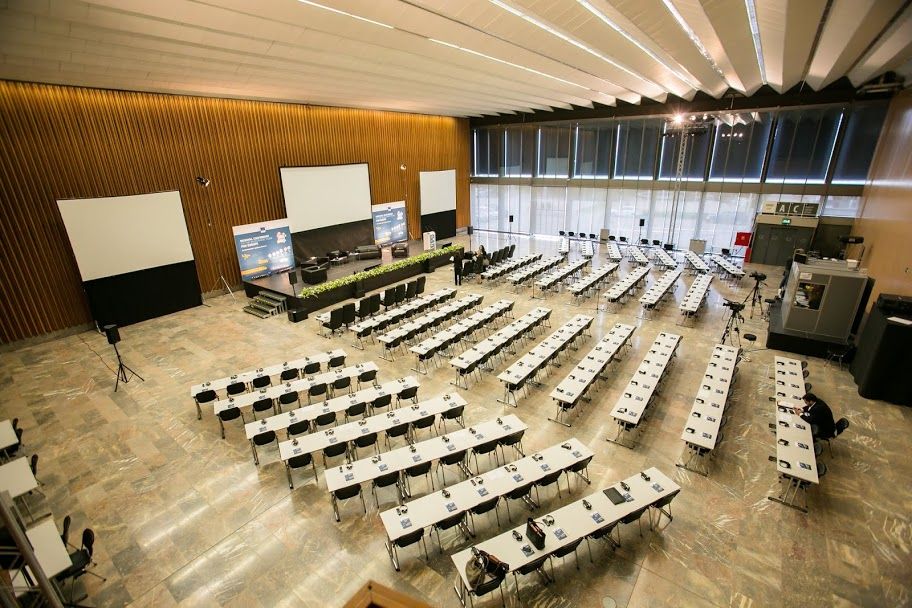
Every hall at the Convention and Exhibition Centre has a clear authors’ signature of their creators. The Kupola hall (formerly Hall A) is perhaps the most remarkable. It is the first modern multipurpose hall that had electric tribunes, which enabled the organisation of both concerts and sports events and congresses. Above the hall is a dome supported by four pillars and the specific structure was an example for similar halls in Belgrade and Skopje. Hall A hosted exceptional events that shaped the fair, cultural and congress history of the city. From an architectural point of view, the hall is still fresh and functional today due to the new add-on, which was added in 2004 during the last major renovation of the fairground. The Kocka Hall is especially popular among concert organisers.
STEKLENA DVORANA
In terms of architecture, the Glass Hall (former hall C) is especially interesting. It consists of four identical units in a mushroom shape. They can be combined hassle-free into new units for which architect Milan Mihelič predicted organic expansion. The flexibility of such spaces also creates excitement in the profession today. Similarly, the construction was used at Petrol service stations, where the architects of today still admire the architectural enthusiasm. With the distance of time, this part of the Economic Exhibition can be regarded as exceptional architecture, which was completely in the spirit of time and is still aesthetic and mature today.
The Exhibition and Convention Centre provides over 12,000 m2 of covered exhibition areas. The last renovation between 2001 and 2005 preserved the architectural innovation of the fair halls and was carried out with a sense of detail and with the respect of the outstanding work of architects from the period of Slovenian modernism.
For their work, the architects received numerous awards. Branko Simic received the Prešeren Prize in 1959, Milan Mihelič was the author of most of the buildings, he was awarded in 1976.
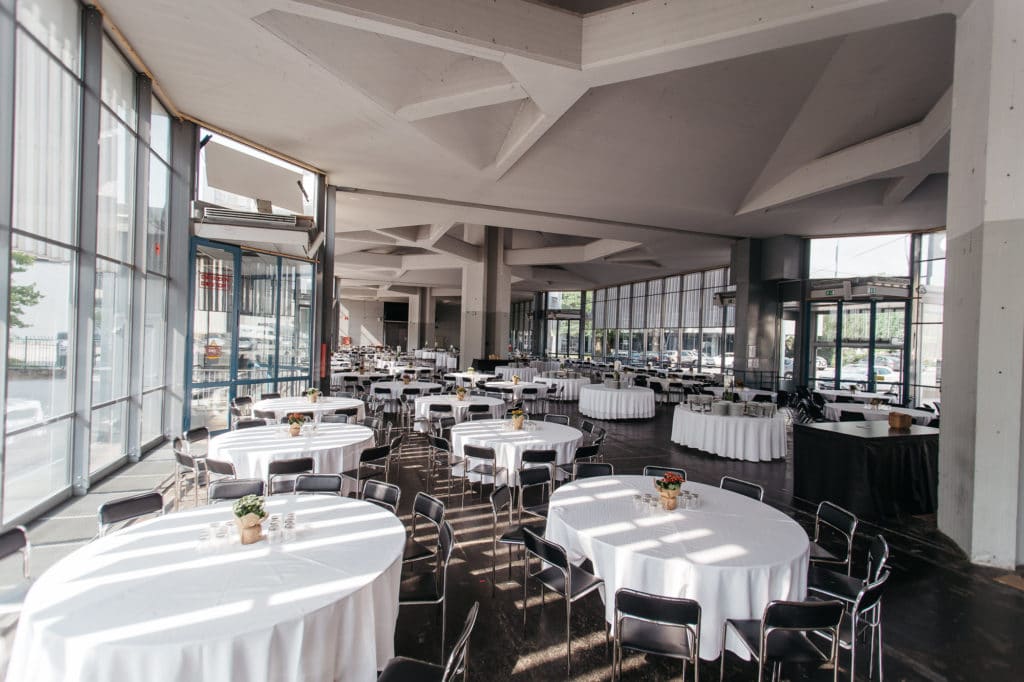
Meeting planners are often unaware that they are located in sites that were at the height of architecture in time when they were built and are upgraded today to successfully compete with the global scene. This quality space is also in a great location, as it is just a stone’s throw from the city centre. At the Convention and Exhibition Centre, an innovative congress-event concept is combined with quality architecture. Time has shown all the value and depth of the thinking of the architects who co-formed the Ljubljana Exhibition and Convention Centre.
ABOUT THE ARCHITECT MILAN MIHELIČ
Milan Mihelič is one of the most important Slovenian architects of the 20th century. He is considered to be an important representative of the Ljubljana School of Architecture. He relied primarily on modernism and functionalism. The importance of his contribution was also recognised by the Slovenian Academy of Sciences, which accepted him as a regular member of its own kind.
Among Slovenian architects he is considered a master of construction, which is especially evident in his architecture at the Exhibition and Convention Centre. In addition to the architecture, he also designed posters for various fairs and events at the exhibition site. His reflection on the flexibility of the fairgrounds and congress spaces and the possibilities of adapting to different requirements is still considered to be innovative and extremely advanced today.
Glass Hall
The exhibition pavilion C is considered to be the most prominent example of the structural architectural solution in Yugoslavia, and at the same time the monumental design of the expanding architecture. It is a complex of several types of elements, the centre of which is an interesting mushroom octagonal roof.
